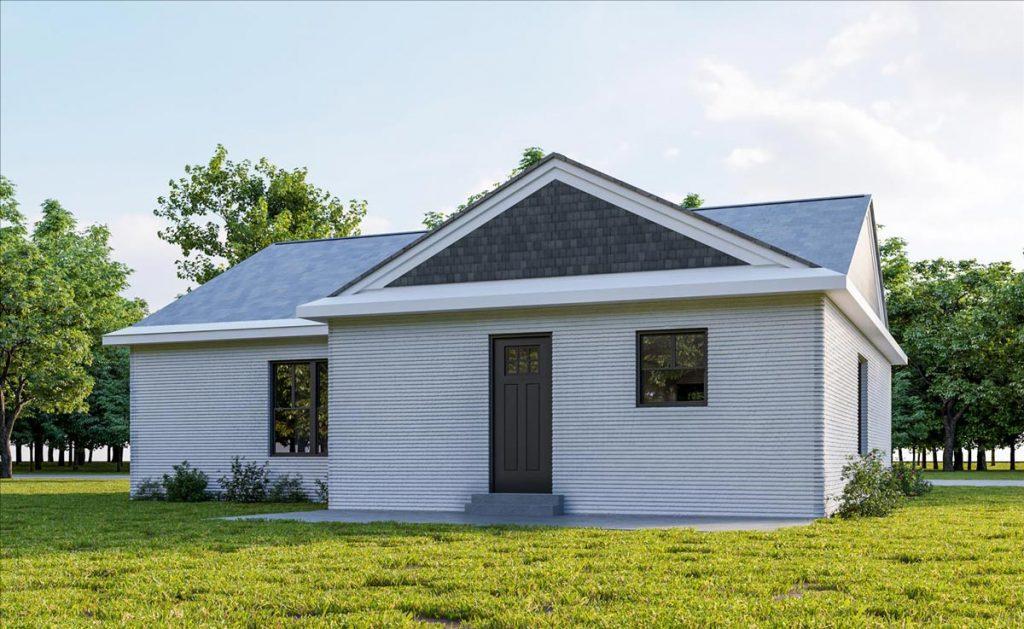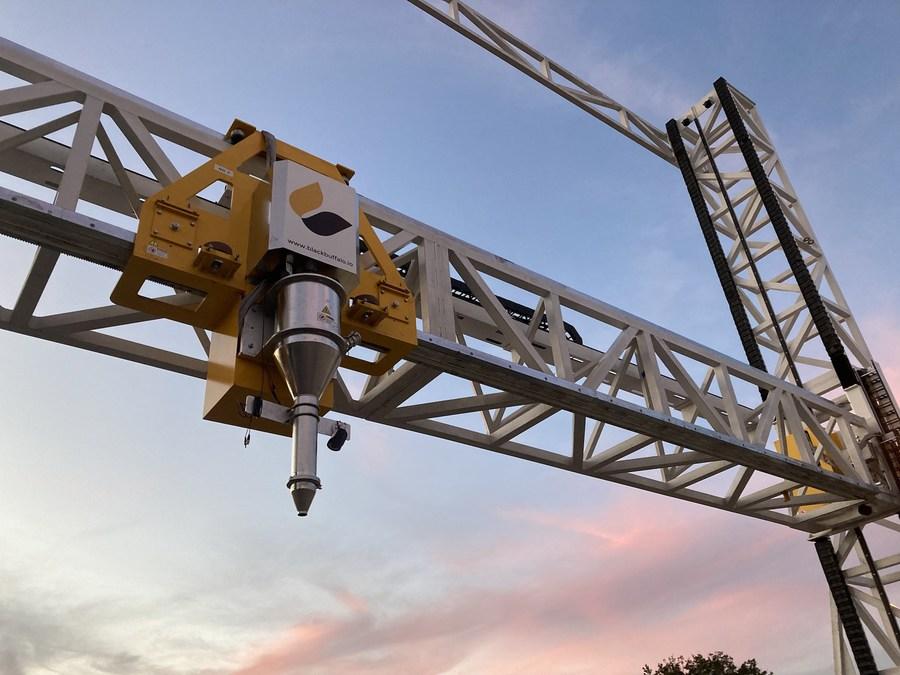China3D printingNet April 28th News, Architecture 3D printingCompany Alquist 3D has announced plans to build 200 homes in the US state of Virginia.
After completing the construction of “the first self-use 3D-printed home” earlier this year, Alquist 3D has now revealed that it aims to carry out the largest construction project to date using the technology across the state of Pulaski and Roanoke. Given the rapidly growing workforce in the region, it is expected to be an ideal test bed to demonstrate the efficacy of 3D printing in creating accessible new homes.
Zachary Mannheimer, founder and CEO of Alquist 3D, said: “As immigration patterns have changed due to the pandemic, climate and economic issues, small communities like Pulaski have a huge need – and an excellent opportunity – to provide new Residents develop affordable housing.” “By 3D printing these homes, Alquist and our partners will accelerate Pulaski and Roanoke’s ability to navigate current trends and attract new workers to this wonderful community in Southwest Virginia.”

One of COBOD’s newest 3D printed homes.Photo via COBOD
Fight for affordable accommodation
While there are now a number of architectural 3D printing startups, Alquist 3D differentiates itself from companies seeking to use the technology exclusively to solve America’s “affordable housing crisis.” The company has invested more than four years of additive manufacturing R&D with partner Atlas Community Studios, and has come up with a plan to solve this problem by 3D printing large but affordable family homes.
The first builds of Alquist 3D were carried out in partnership with Virginia Tech and supported by the Virginia Housing Authority of the City of Richmond. This project was followed by another late last year with the non-profit Habitat for Humanity, which created a three-bed 3D-printed home with 1,200 square feet of livable space using the BOD2 system provided by PERI Group.
At the time, the exterior of the home was said to have been built in just 28 hours, hailed by Mannheimer as a testament to the speed and sustainability that 3D printing could help bring to the U.S. homebuilding market.
“Concrete 3D printing reduces the amount of waste normally found on construction sites, and our energy savings are significant,” Mannheimer said in January. “However, concrete is far from the greenest material and we are working with partners to create a greener material next year. We also hope that this new technology will be another way to build more affordable housing for families .”
“HABITAT and ALQUIST share a similar mission: to build affordable housing. We both believe that families in America have a dream, and by working together, we can make that dream a reality for more families.”

Black Buffalo 3D’s NEXCON architectural 3D printer. Image via Black Buffalo 3D.
Meeting Virginia’s Housing Needs
Following the success of initial construction in Richmond and Williamsburg, Alquist 3D has now revealed plans for a large-scale home for workers in Pulaski. As companies including Volvo, Blue Star Manufacturing and American Glove Innovations expanded, creating 3,000 additional jobs in the town, the company said “demand for housing is soaring” there.
Alquist 3D also cites an article based on a Brooking Institute report that highlighted Virginia’s New River Valley as one of the fastest-growing regions for tech jobs in the U.S., so Alquist 3D highlighted the need to accommodate workers.
To meet this demand, the company will immediately begin work on the next batch of 3D-printed houses. However, unlike previous builds using COBOD machines, its latest version is expected to be realized with the help of Black Buffalo 3D’s “NEXCON”, a gantry system capable of creating three-tier structures.
The OSHA is said to limit top speed to 9.8 inches per second, and with 12 hours of continuous operation, the machine is capable of building a 1,000-square-foot structure in 20 hours.
To make loading material as easy as possible, NEXCON’s nozzles feature an open hopper design and interchangeable tips, enabling users to manually inspect them and switch heads depending on the application. The unit also offers the company’s proprietary “ink” mix, which is said to have better strength and durability than mortar, another aspect that could benefit the new version of Alquist 3D.
While Alquist 3D has yet to announce a timeline for when its 200 3D-printed homes will be built, it has revealed that the project will kick off on Friday, April 29, 2022. The event will begin with a tech demo near Pulaski’s first two 3D-printed homes, across from a site at 205 Pierce Avenue in Pulaski, Virginia.
3D Printing’s Homebuilding Potential
Alquist 3D’s upcoming residential project is one of several currently seeking to apply architectural 3D printing technology on a wider scale than ever before. Not surprisingly, given that it was one of the early leaders in an emerging market, ICON is committed to building the largest of them all, a 100-person 3D-printed housing community.
Apis Cor was recently featured at the 3D printing industry’s “Exploring the Emerging Construction Industry of 3D Printing” webinar, and earlier this month announced a new series of affordable 3D printed housing projects. Specifically, the company has partnered with SMASH and Eden Village Wilmington on plans to build low-cost housing in South Florida and North Carolina.
Elsewhere, companies like Serendix Partners are expanding home building in another direction by 3D printing tiny futuristic spherical houses. In March 2022, the company was reported to be able to additively manufacture a 107.6-square-foot, 20,000-kilogram habitable structure within 24 hours, meeting Japanese seismic and European insulation standards.
(responsible editor: admin)


0 Comments for “ALQUIST 3D to build 200 homes in ‘world’s largest’ 3D printed construction project”